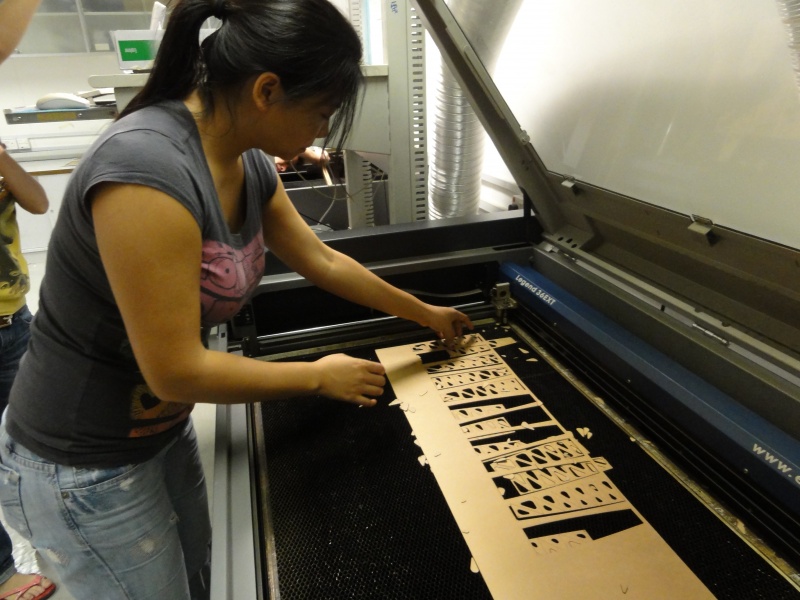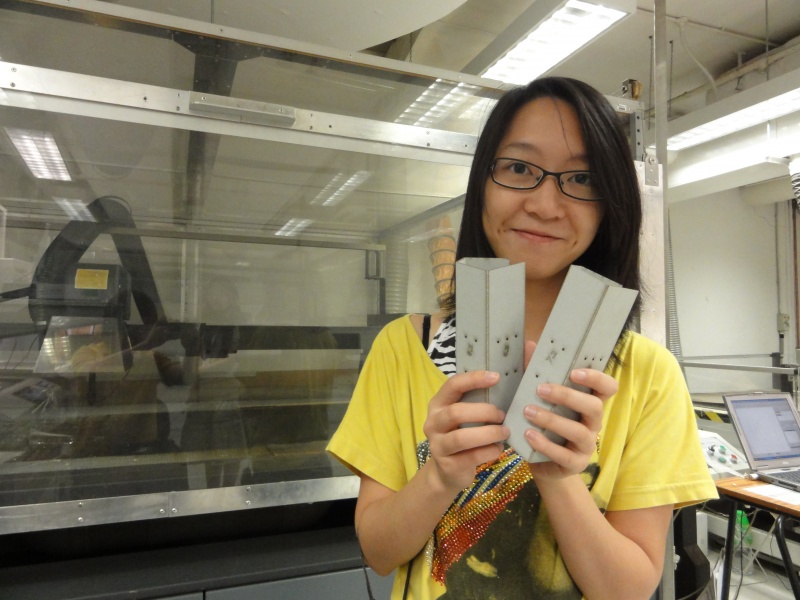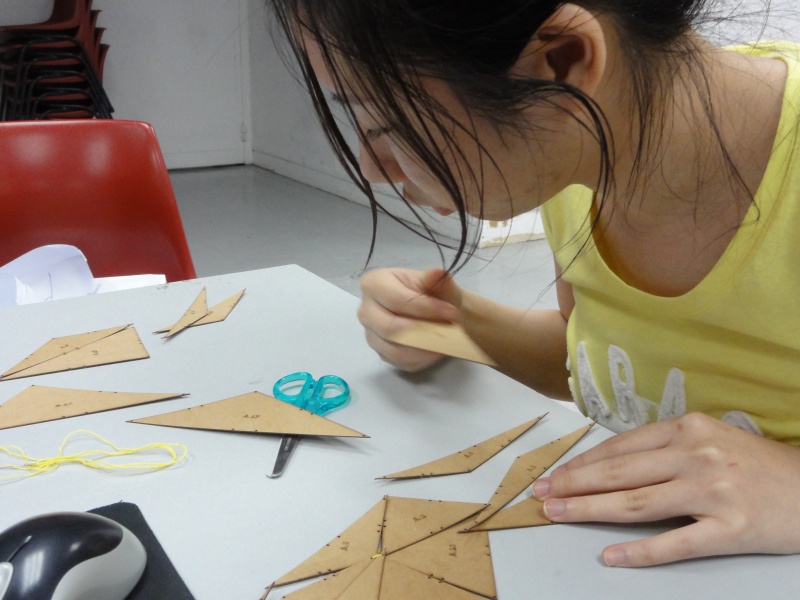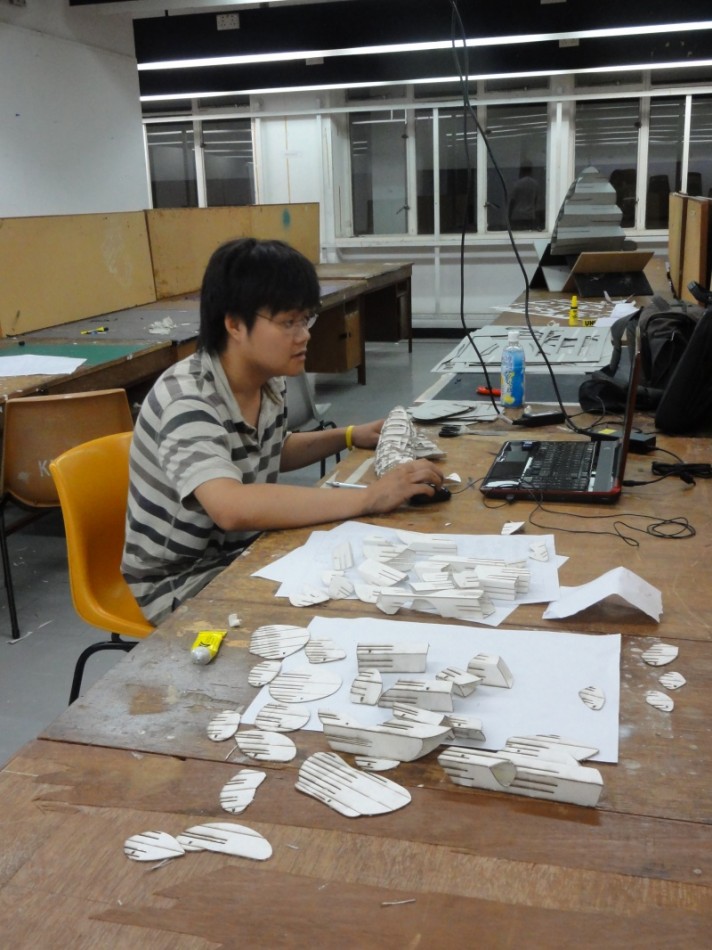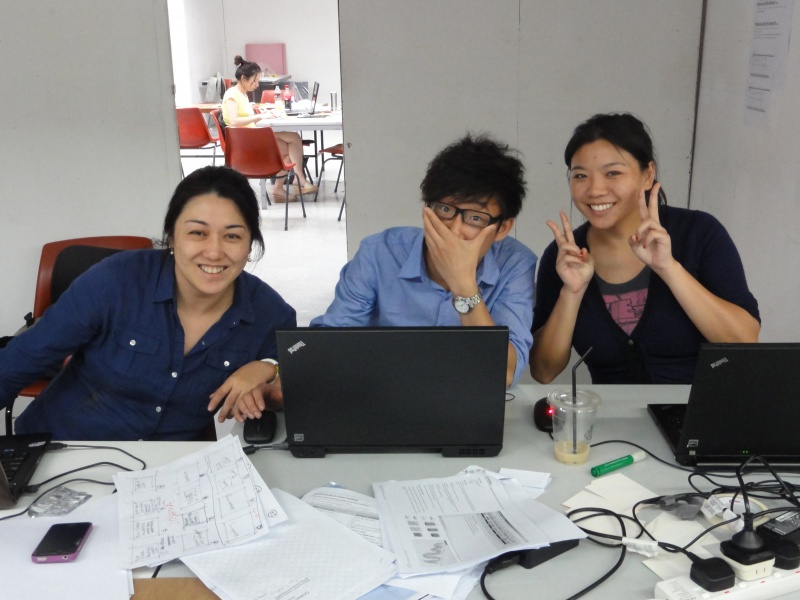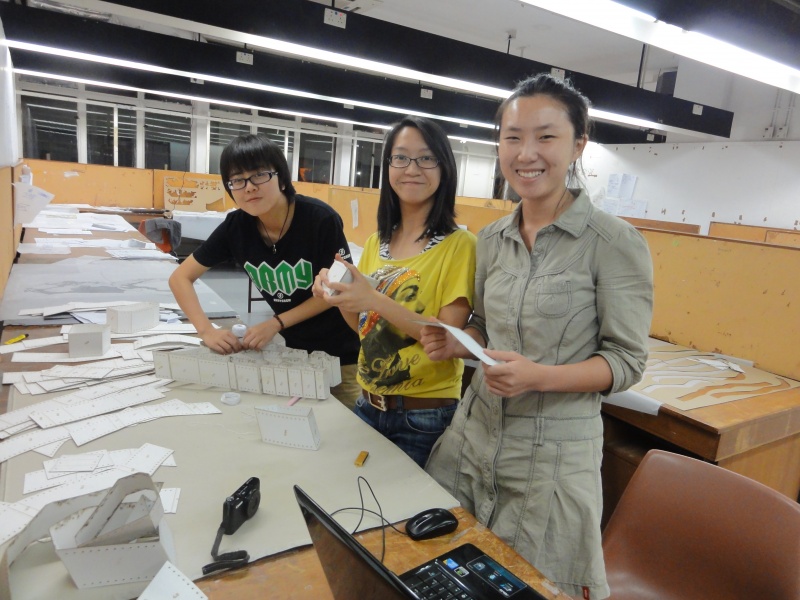The heat is building up as the five groups are rushing to get their geometry ready for laser cutting and getting them assembled. Some groups managed to have their cut files ready and nested for laser cut in the morning. While some group are still struggling to layout their piece within the boundary of the cardboard. This week, we have provided 4 types of cardboard that are ready to be exploited in the studio, they vary from thin 0.8mm cardboard to thick 2mm chip board that we think would suit the purpose of scaled models, mostly 1:10 or 1:20.
All of us who have made something out of the computer might already know the things that would go wrong from the digital to the material. Slots may not fit, tolerance reserved for the model may either be too much or too little, material thickness and material strength are difficult to predict. And all of these require testing. For example, different material require different settings on different machine, while some of the projects require the use of lower power cut to create a fold-able edge. The fold-ability depends on the depth of the cut, and those are particular tricky to control. (Which vary even by the degree of moisture in the cardboard)
Most of the team had their models all cut before the workshop closes at 5:30, being responsible for the machine operation, I’m getting terribly busy operating three machines and converting files from Rhino to AutoCAD to .plt files. While all three machines have different bed size and power settings, handling all five team’s cutting is screwing my mind. At the end of the day, we are able to cut all the models with only one exception of the team that aims to cut a 1:10 ceiling model 1.5m X 0.8m . Their layout uses 25 sheets of cardboard, where we only manage to cut half of them.
The main theme going around is about joining small components into a bigger picture, and many attempts are to investigate into the types of joints that could create an interesting assembly, the result are quite creative. One group triangulated a chair to planar surfaces, and decided to stitch them up with small strings. While most of us agree the process is tedious and time consuming, the result turns out to be quite beautiful.
I went back to the studio at around 1 am to check out the progress, and most of them were still there, putting their components together. Students are also preparing a slideshow that they will present tomorrow.
